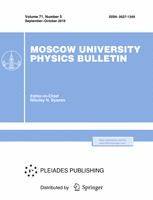When conducting any ground-based optical experiment, it is always necessary to account for the background, which is present in the signal alongside the events of interest. A model of the night sky background is highly useful when working with data from such experiments. Currently, existing models in this field are either full-dome or limited to a narrow wavelength range. The main drawback is that these models represent the total flux, making it impossible to obtain the spectrum for a specific region of the sky. This paper presents the initial stages of implementing a model for night sky brightness in the optical range. The celestial sphere model is constructed in grids of 0.1o x 0.1o, allowing for the calculation of both the spectrum and flux for any given region. \smallskip
42.68.-w Atmospheric and ocean optics
$^1$\
$^2$Skobeltsyn Institute of Nuclear Physics, Lomonosov Moscow State University, Moscow, Russia



